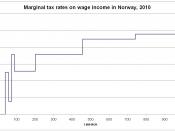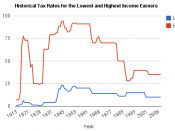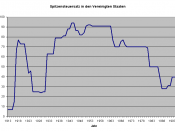Tax reform has become a major governmental policy issue in the United States as well as in the rest of the world. Countries are attempting to balance both economic efficiency and provide equity in taxation. Governments are looking to rewrite tax codes to minimize their impact on economic growth. Specifically, governments throughout the world are attempting to preserve incentives built into taxation to maximize economic efficiency. At the same time, these governments are trying to cope with the growth in social welfare programs throughout the past three decades. In this paper I shall discuss two nations which dramatically overhauled their tax systems, and whether or not their goals with tax reform were achieved.
In the article 'The tax reform act of 1986: Did Congress love it or
leave it?', Randall Weiss discusses the attitudes about taxes in the United States. He details the events and attitudes leading to the Tax Reform Act of 1986, and shows how public perception about taxes has changed since then.
He also discusses some of the tax reform proposals that are now currently being thought about in Congress.
In 1986 the United States Congress enacted the Tax Reform Act (TRA-86). The act passed with a great deal of bipartisan support. This support was made possible by two features of the act. The first was that federal income tax rates were to be cut dramatically. While this would lead one to believe that federal government receipts were cut substantially as well, it was the second important feature of the bill that allowed it to be revenue neutral. This feature was that the bill was to improve horizontal equity in the tax system. This would be accomplished by eliminating many of the deductions that many individuals, particularly the well to do, were allowed to make.


